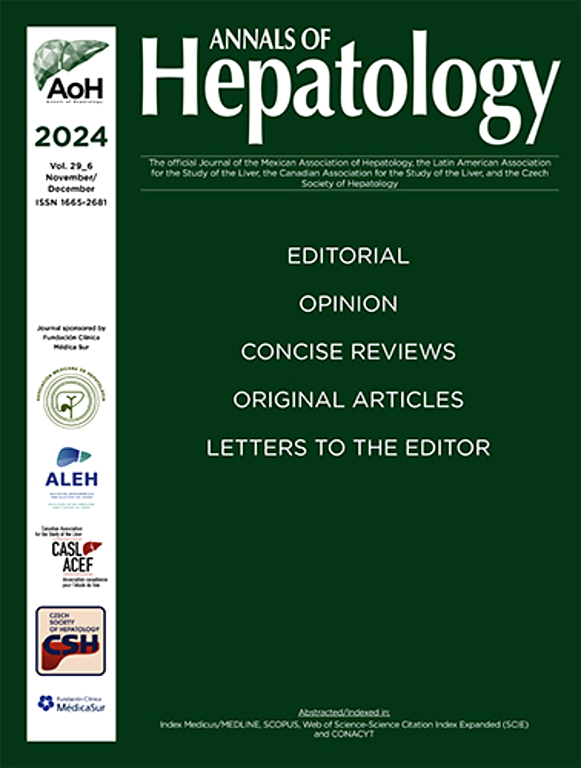GDF11抑制Stat3信号通路,在人肝细胞癌细胞中给予代谢、炎症和致癌限制。
IF 4.4
3区 医学
Q2 GASTROENTEROLOGY & HEPATOLOGY
引用次数: 0
摘要
GDF11在人类HCC细胞中显示出潜在的抗肿瘤作用,但导致这种作用的分子机制以及GDF11在HCC中的早期转录组反应仍然是一个谜。确定GDF11在HCC治疗中揭示的潜在治疗干预靶点。用50 ng/ml GDF11处理材料和PatientsHuh7细胞12小时,使用Illumina HiSeq4000平台进行测序。对结果进行过滤,p≤0.01,±1.5倍变化,FDR= 0.05。利用Ingenuity Pathway analysis (IPA)程序进行功能分析和富集分析。结果共发现1450个差异表达基因。我们观察到GDF11对高致癌途径有深远的影响,突出显示Stat3途径、β -连环蛋白和HIF-1 α等。功能分析显示,GDF11可以降低胆固醇和脂质代谢、炎症、耐药和干细胞能力。值得注意的是,在富含脂质环境下生长的肿瘤表现出显著的Stat3激活,因此GDF11诱导的Stat3分子特征的降低强烈提示了一种通过抑制该因子转录途径介导的机制,影响了代谢、炎症、分化和耐药性。sour研究的新发现是GDF11抑制Stat3信号通路,从而施加代谢、炎症和致癌限制。GDF11在HCC治疗中具有良好的前景。本文章由计算机程序翻译,如有差异,请以英文原文为准。
The GDF11 represses the Stat3 signaling pathway, conferring metabolic, inflammatory, and oncogenic restrictions in cells derived from human hepatocellular carcinoma.
Introduction and Objectives
GDF11 has shown potential in displaying anti-tumor effects in cells derived from human HCC, but the molecular mechanisms that lead to this, as well as the early transcriptomic response of GDF11 in HCC, remain a mystery. To identify potential targets for therapeutic intervention revealed by GDF11 treatment in HCC.
Materials and Patients
Huh7 cells were treated for 12 h with 50 ng/ml of GDF11, and sequencing was performed using the Illumina HiSeq4000 platform. The results were filtered with a p≤0.01, ± 1.5-fold change, and an FDR= 0.05. Functional and enrichment analysis was done using the Ingenuity Pathway Analysis (IPA) program.
Results
Our data show 1450 differentially expressed genes. It is observed that GDF11 has a profound impact on highly oncogenic pathways, highlighting the Stat3 pathway, beta-catenin, and HIF-1 alpha, among others. Functional analysis revealed that GDF11 could reduce cholesterol and lipid metabolism in general, inflammation, drug resistance, and stemness capacity. It is noteworthy that tumors grown under a lipid-rich environment exhibit significant activation of Stat3, so the decrease in the molecular signature of Stat3 induced by GDF11 strongly suggests a mechanism mediated by the repression of the pathway of this factor transcription, impacting metabolism, inflammation, differentiation, and drug resistance.
Conclusions
Our study's novel finding is that GDF11 represses the Stat3 signaling pathway, thereby imposing metabolic, inflammatory, and oncogenic restrictions. GDF11 represents a good promise in the treatment of HCC.
求助全文
通过发布文献求助,成功后即可免费获取论文全文。
去求助
来源期刊

Annals of hepatology
医学-胃肠肝病学
CiteScore
7.90
自引率
2.60%
发文量
183
审稿时长
4-8 weeks
期刊介绍:
Annals of Hepatology publishes original research on the biology and diseases of the liver in both humans and experimental models. Contributions may be submitted as regular articles. The journal also publishes concise reviews of both basic and clinical topics.
 求助内容:
求助内容: 应助结果提醒方式:
应助结果提醒方式:


